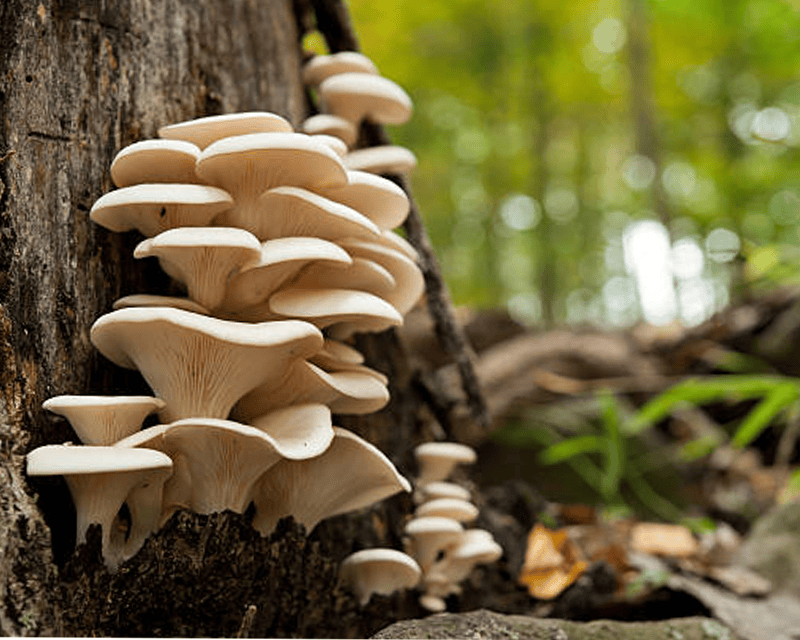Oyster Mushroom: A Brief Overview
Oyster mushrooms, scientifically known as Pleurotus ostreatus, belong to the fungi kingdom and are renowned for their delicate flavor and unique shape. They are commonly found growing on decaying wood, especially on the bark of hardwood trees like oak. Oyster mushrooms have a soft, slightly chewy texture and are prized in culinary circles for their versatility in various dishes.
These mushrooms come in different colors ranging from white to light brown or grey, and their caps can grow up to six inches in diameter. Oyster mushrooms are considered a culinary delight due to their mild, seafood-like taste, making them a popular choice for both vegetarians and meat-eaters alike. Due to their high adaptability, oyster mushrooms can thrive in a variety of climates, making them a favorite among home growers and commercial cultivators.
Types of Oyster Mushrooms:
- Oyster mushrooms come in various types, each with its unique characteristics and flavors.
- The most common type is the Pleurotus ostreatus, also known as the pearl oyster mushroom. It is easily identifiable by its pale beige color and delicate, oyster-like shape.
- Another popular variety is the Pleurotus pulmonarius, or the phoenix oyster mushroom, which boasts a more robust flavor profile and slightly darker hues compared to its pearl counterpart.
- Additionally, the Pleurotus eryngii, or king oyster mushroom, stands out for its meaty texture and rich umami taste, making it a favorite among culinary enthusiasts.
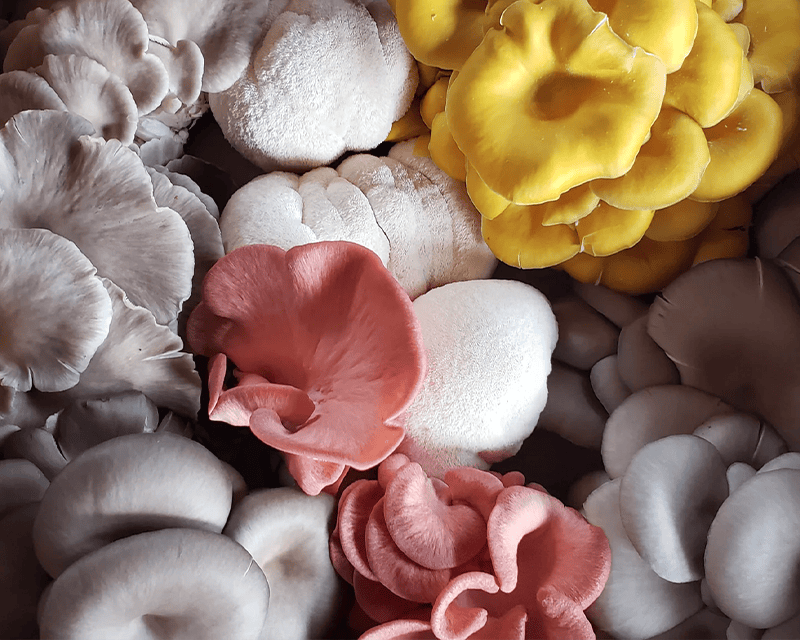
- Aside from the traditional oyster mushroom varieties, there are also less common types such as the Pleurotus citrinopileatus, or golden oyster mushroom, known for its vibrant yellow hue and subtle peppery notes.
- The Pleurotus cornucopiae, or the blue oyster mushroom, offers a visually striking appearance with shades of blue mingled in its cap.
- Lastly, the Pleurotus djamor, or pink oyster mushroom, adds a pop of color to dishes with its unique pink tones and mild, sweet flavor.
- Each type of oyster mushroom brings its own distinct flair to the table, catering to different tastes and preferences in the culinary world.
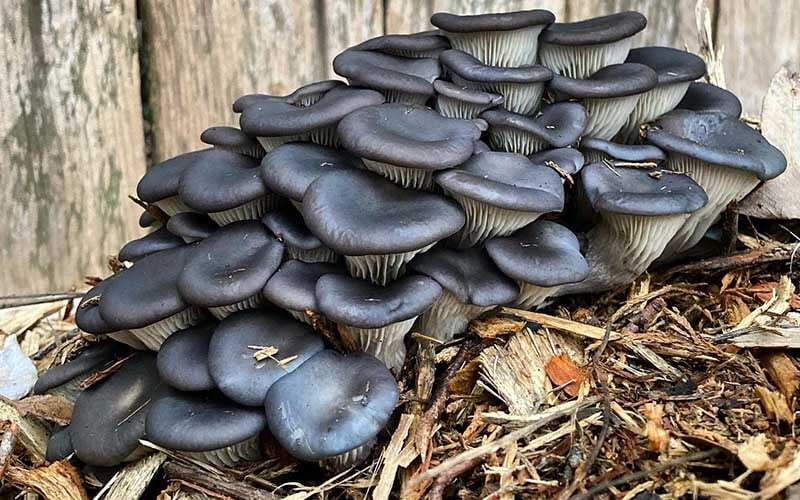
Benefits of Consuming Oyster Mushrooms:
Oyster mushrooms, known for their rich umami flavor and meaty texture, offer a plethora of health benefits. Packed with essential nutrients such as vitamins C, D, and B-complex, as well as minerals like potassium and iron, oyster mushrooms are a nutritional powerhouse. These mushrooms are also low in calories and fat, making them an excellent addition to a balanced diet.
Moreover, oyster mushrooms contain high levels of antioxidants and beta-glucans, which can help boost the immune system and reduce inflammation in the body. Studies have shown that regularly consuming oyster mushrooms may have anti-inflammatory and anti-cancer properties, making them a valuable ally in maintaining overall health and well-being. Whether sautéed, roasted, or grilled, incorporating oyster mushrooms into your meals can not only enhance the flavor but also contribute to a healthier lifestyle.
Nutritional Value of Oyster Mushrooms:
Oyster mushrooms are a low-calorie and nutrient-rich fungi that provide various essential vitamins and minerals. They are particularly high in protein, fiber, and antioxidants, making them a valuable addition to a well-balanced diet. Oyster mushrooms are also a good source of B vitamins such as riboflavin, niacin, and pantothenic acid, which play crucial roles in energy metabolism and overall health.
Additionally, oyster mushrooms are a rich source of essential minerals like potassium, phosphorus, and iron. These minerals are vital for maintaining proper electrolyte balance, bone health, and red blood cell formation. Oyster mushrooms also contain ergothioneine, a unique antioxidant that has been linked to potential anti-inflammatory and neuroprotective effects. Overall, incorporating oyster mushrooms into your meals can help boost your nutrient intake and support your overall well-being.
Culinary Uses of Oyster Mushrooms:
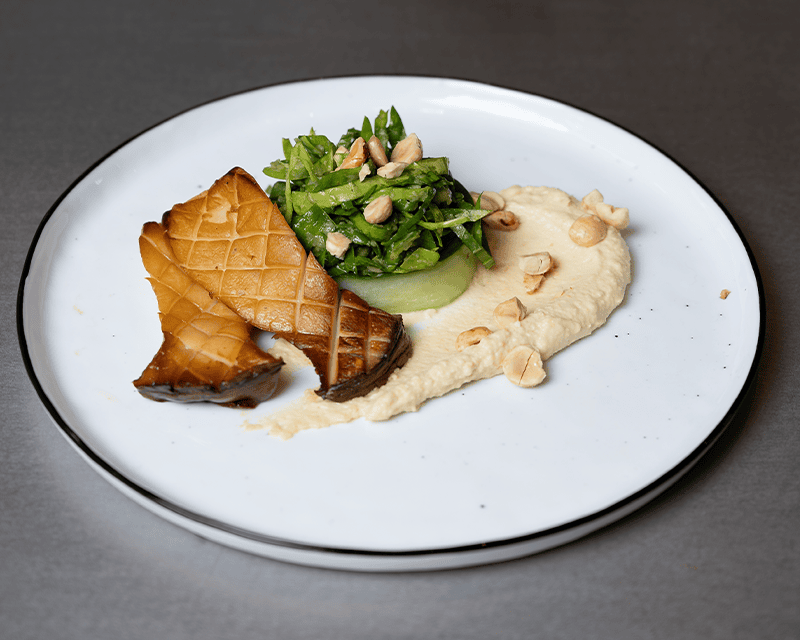
Oyster mushrooms are versatile fungi that can be used in a variety of culinary dishes. Their delicate flavor and meaty texture make them a popular choice for both vegetarian and meat-based recipes. When sautéed, oyster mushrooms develop a rich umami taste that adds depth to stir-fries, pasta dishes, and soups.
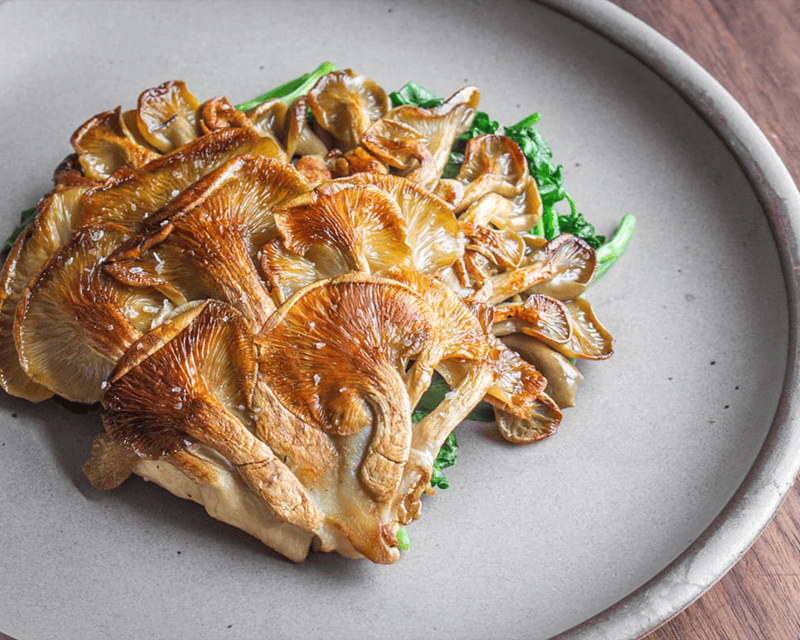
Additionally, oyster mushrooms can be roasted or grilled to enhance their natural flavors. By marinating them in a mixture of olive oil, garlic, and herbs before cooking, you can create a savory side dish or topping for salads and pizzas. This adaptable mushroom also pairs well with other ingredients like seafood, chicken, and vegetables in various dishes.
Growing Oyster Mushrooms at Home:
Growing oyster mushrooms at home can be a rewarding and fun experience for any mushroom enthusiast. To start the process, you will need to gather the necessary supplies, which include a substrate like straw or coffee grounds, oyster mushroom spawn, a large plastic bag or container, and a misting bottle for maintaining humidity.
Once you have all your supplies ready, begin by sterilizing the substrate to prevent any unwanted bacteria or mold from inhibiting the growth of the oyster mushrooms. After sterilization, mix the substrate with the oyster mushroom spawn thoroughly and place it in the plastic bag or container. Make sure to keep the growing environment humid and at the right temperature for optimal mushroom growth. With patience and proper care, you can soon enjoy a bountiful harvest of fresh oyster mushrooms right from the comfort of your home.
Health Benefits of Oyster Mushrooms:

- Oyster mushrooms are known for their potential health benefits, such as boosting immunity and reducing inflammation.
- These mushrooms contain ergothioneine, a powerful antioxidant that helps protect cells from damage caused by free radicals.
- Additionally, oyster mushrooms have been studied for their ability to support heart health by lowering cholesterol levels and promoting healthy blood circulation.
- Moreover, oyster mushrooms are a good source of vitamins and minerals, including vitamin D, which plays a crucial role in maintaining bone health and supporting immune function.
- The beta-glucans found in oyster mushrooms have also been linked to improved insulin sensitivity and may help regulate blood sugar levels. Including oyster mushrooms in your diet can be a tasty way to enhance your overall well-being and incorporate a variety of nutrients into your meals.
Oyster Mushroom Farming Techniques:
Oyster mushroom farming can be a rewarding venture for those looking to grow their own fresh produce at home. To start, a suitable substrate is essential for the mushrooms to thrive. Common substrates include straw, coffee grounds, and sawdust. The substrate needs to be pasteurized to eliminate any harmful bacteria or competing organisms that could hinder mushroom growth. After pasteurization, the substrate is mixed with mushroom spawn, which acts as the seed for the mushrooms to grow.
Maintaining the right environmental conditions is crucial for successful oyster mushroom cultivation. Mushrooms thrive in a humid environment with proper air circulation and indirect light. The ideal temperature for oyster mushrooms ranges between 55-75°F. Regularly misting the growing area can help maintain the required humidity levels. Additionally, proper ventilation is essential to prevent the buildup of carbon dioxide, which can inhibit mushroom growth. By diligently monitoring and adjusting these factors, individuals can cultivate healthy oyster mushrooms at home.
Oyster Mushroom Substitutes in Cooking:
When looking for alternatives to oyster mushrooms in your recipes, shiitake mushrooms can serve as a suitable replacement. The meaty texture and earthy flavor of shiitake mushrooms make them a versatile option in various dishes, such as stir-fries, soups, and risottos. Additionally, shiitake mushrooms are rich in umami flavor, similar to oyster mushrooms, enhancing the depth of taste in your cooking.
Another option to consider as a substitute for oyster mushrooms is cremini mushrooms. With a mild and slightly nutty flavor, cremini mushrooms can complement a wide range of dishes, including pasta dishes, salads, and stews. These mushrooms are widely available and affordable, making them a convenient choice for recipes that call for oyster mushrooms.
Tips for Selecting and Storing Oyster Mushrooms:
- When selecting oyster mushrooms, look for firm caps and avoid any with slimy or discolored spots.
- The gills underneath should be bright white, and the overall mushroom should have a fresh, earthy smell.
- Opt for smaller, younger oyster mushrooms for a milder flavor, while larger ones tend to have a stronger taste.
- To store oyster mushrooms, place them in a paper bag or a loosely closed container in the refrigerator.
- Avoid sealing them in airtight bags or containers, as this can cause moisture build-up and lead to quicker spoilage.
- Oyster mushrooms can last up to a week when stored properly in the refrigerator.
- When buying oyster mushrooms, consider purchasing them in smaller quantities to ensure freshness.
- Check for any signs of decay, such as a slimy texture or unpleasant odor, which indicate that the mushrooms are past their prime.
- If you plan to use the oyster mushrooms within a few days, you can store them at room temperature in a cool, dry place.
- However, for extended storage, it's best to refrigerate them to maintain their quality.
- Remember to inspect the mushrooms before use, removing any parts that have started to deteriorate to prevent the spread of spoilage to the rest of the batch.

